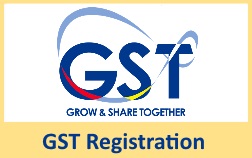Step-by-Step Process for Singapore GST Registration Explained
Step-by-Step Process for Singapore GST Registration Explained
Blog Article
Taking Full Advantage Of Tax Effectiveness: Expert Tips on Navigating the GST Enrollment Labyrinth for Small Companies
Navigating the complex landscape of Product and Solutions Tax (GST) enrollment can be a labyrinthine task for small companies intending to optimize their tax obligation efficiency. Recognizing the eligibility standards, thorough documents requirements, tactical timing factors to consider, and experienced registration process ideas can dramatically affect a business's financial standing. Compliance with GST laws is extremely important, and adhering to ideal methods can streamline operations and avoid prospective risks. In this conversation, we will check out expert understandings and workable suggestions that can equip small companies to browse the GST enrollment maze properly and enhance their tax efficiency.
Qualification Criteria
Qualification demands for Local business GST Registration encompass particular requirements that companies should satisfy to adhere to tax obligation policies. To receive GST enrollment, a company has to have an annual turn over surpassing the threshold established by the tax authorities, which differs by country. Additionally, companies associated with inter-state supply of services or products, or those marketing products online, may be needed to sign up for GST, irrespective of their turnover. It is important for services to properly determine their qualification based upon these turn over thresholds to avoid penalties for non-compliance. Singapore GST Registration.

Documentation Requirements
The required documents generally includes evidence of service enrollment or identity, address and incorporation proofs of the company owner, photos, financial institution account information, and proof of the major area of organization. Furthermore, organizations require to provide information of their company activities, consisting of the services or goods provided.
Besides the required files, services may also be needed to submit additional info based on their particular situations. This can include papers related to collaborations, the authorization of signatories, or any type of various other relevant arrangements. Maintaining all necessary documentation organized and readily available can improve the registration process and help companies conform with the demands effectively - Singapore GST Registration. Failure to offer the required paperwork might lead to hold-ups or perhaps denial of the GST enrollment application. Thorough attention to detail and adherence to the documentation standards are vital for an effective GST registration process for small services.
Timing Factors To Consider
Thinking about the essential paperwork requirements have actually been meticulously resolved, the next critical element for small businesses starting the GST registration procedure is the calculated monitoring of timing factors to consider. Timing plays a pivotal duty in GST registration, influencing not just conformity yet also monetary facets of the company. Little businesses need to meticulously plan the timing of their GST registration to optimize advantages and minimize prospective threats.

Additionally, companies ought to line up the timing of their GST registration with their operational readiness. Adequate prep work, such as upgrading audit systems and training team, is necessary to flawlessly incorporate GST needs right into everyday procedures. By tactically taking care of timing factors to consider, tiny organizations can browse the GST enrollment procedure efficiently and enhance their tax obligation performance.
Registration Process Tips
Successfully navigating the GST registration process needs tiny businesses to apply positive and strategic enrollment process tips. One critical idea is to guarantee all necessary papers are his explanation easily offered before beginning the enrollment process. This consists of company registration records, evidence of address, bank declarations, and identification proofs of the company owners. Validating the accuracy of the information supplied is equally essential to avoid delays or denials.
Additionally, recognizing the limits and needs for GST enrollment based on the certain state or area where business operates is crucial. Some states have various turn over limits that set off page mandatory enrollment, so being educated concerning these limits can help organizations plan in advance.
One more beneficial suggestion is to take into consideration seeking professional aid from accounting professionals or tax professionals who concentrate on GST enrollment. Their experience can enhance the process, reduce errors, and ensure conformity with all policies.
Conformity Best Practices
Little organizations must prioritize conformity to prevent fines and maintain a great standing with tax obligation authorities. Little business proprietors should regularly evaluate federal government guidelines and look for expert suggestions if required to ensure they are meeting all requirements. By incorporating these conformity best methods right into their procedures, little services can browse the intricacies of GST enrollment with self-confidence and efficiency.
Verdict
To conclude, small companies can navigate the GST registration labyrinth by ensuring they satisfy eligibility requirements, gather needed paperwork, think about timing ramifications, comply with registration process suggestions, and adhere to compliance best practices. By taking full advantage of tax effectiveness with appropriate GST enrollment, services can improve their monetary administration and operations.
Browsing the complex landscape of Item and click to read more Provider Tax Obligation (GST) enrollment can be a labyrinthine task for little services aiming to maximize their tax efficiency.Eligibility needs for Small Organization GST Enrollment incorporate specific standards that services must satisfy to conform with tax obligation regulations. The called for documentation generally includes proof of organization registration or address, identity and incorporation proofs of the company owner, photographs, bank account information, and evidence of the primary location of company. Additionally, businesses need to provide information of their service tasks, consisting of the items or services supplied.Effectively navigating the GST enrollment procedure requires tiny companies to execute tactical and proactive registration procedure tips.
Report this page